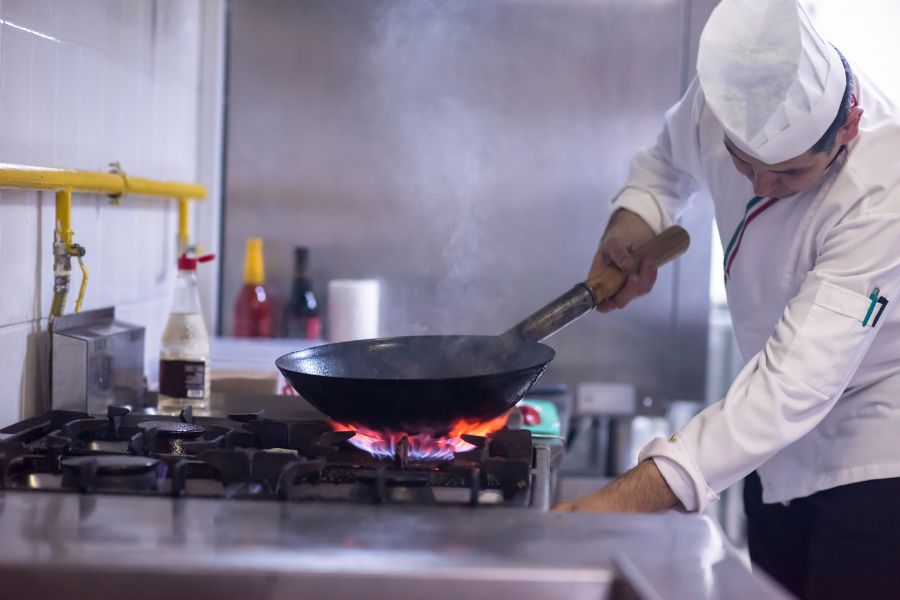Choosing the perfect commercial range for your restaurant is much like setting the foundation of a building—it’s a decision that affects not only the efficiency and functionality of your kitchen but also the quality of the food you serve. Whether you are opening a new restaurant or upgrading your existing kitchen, understanding the nuances of commercial ranges can help you make an informed choice that supports your culinary needs, operational demands, and business goals.
The Basics of Commercial Ranges
Commercial ranges are the powerhouse of a restaurant’s kitchen, designed to withstand heavy use and facilitate a variety of cooking methods. Whether you’re sautéing vegetables, flipping pancakes, or simmering sauces, a reliable commercial range makes all the difference. Understanding the types and functionalities of commercial ranges is the first step in making the right choice.
Types of Commercial Ranges
- Commercial Electric Ranges: Known for consistent heating and safety, modern electric commercial ranges are a staple in kitchens where precise temperature control is crucial.
- Commercial Gas Ranges: Favored for their fast heating response, gas ranges offer a traditional cooking experience with powerful performance.
- Commercial Countertop Ranges: Space-saving solutions that are perfect for kitchens with limited space or as an additional cooking surface.
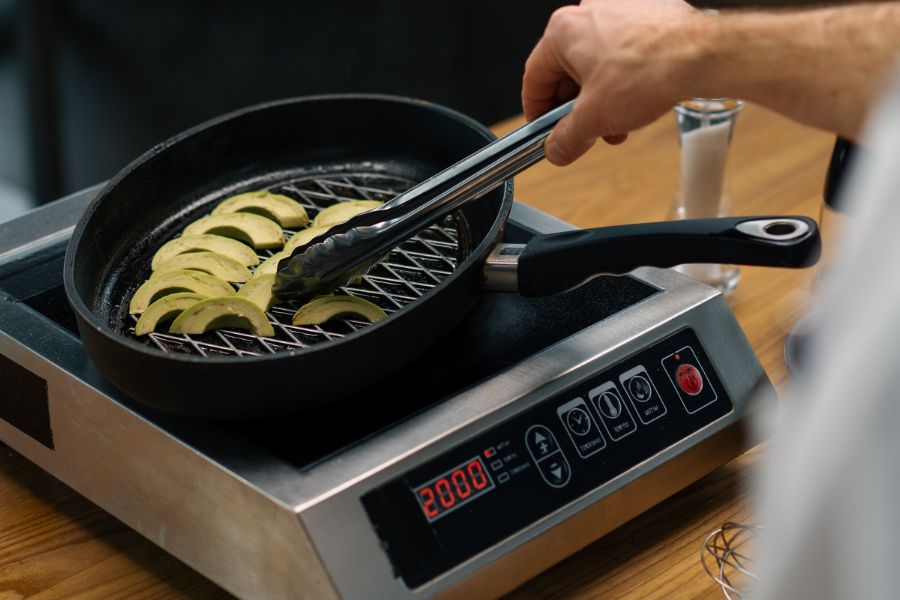
Key Considerations When Choosing a Commercial Range
Assess Your Kitchen’s Needs
To choose the most suitable commercial range for your restaurant, it’s imperative to start with a thorough assessment of your kitchen’s specific requirements. This step involves more than just considering the size of your space; it requires an in-depth understanding of your menu, the volume of meals you need to produce during peak hours, and the speed at which you need to deliver these meals to maintain customer satisfaction.
Menu Considerations
The type of cuisine you offer significantly influences the kind of range you should select. For instance, if your menu is heavy on sautéed dishes, a range with multiple high-powered burners would be ideal. Conversely, if you specialize in baked goods or pizzas, look for ranges that come with a spacious and efficient oven. The diversity of your menu also plays a role. A kitchen producing a wide variety of dishes might benefit from a versatile commercial range, such as integrated griddles or charbroilers, allowing for a multitude of cooking methods without the need for additional appliances.
Volume and Capacity
Gauge the average volume of meals your kitchen must produce, especially during peak business hours. This consideration helps determine the size and power of the range you need. A high-volume restaurant will require a commercial range that can operate efficiently under continuous use, with enough burners and oven space to cook multiple dishes simultaneously. For smaller establishments with a lighter workload, a compact or medium-sized range might be sufficient, saving valuable kitchen space and energy costs.
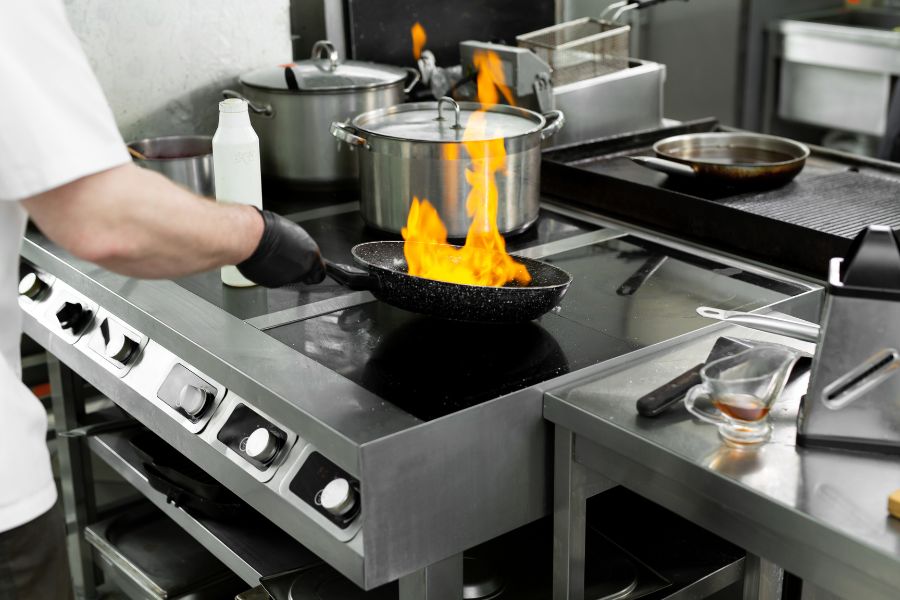
Operational Flow
The layout of your kitchen and the flow of operations during service times also dictate the type of range you need. A well-designed kitchen allows for smooth transitions between prep, cooking, and plating areas. The placement of your range should facilitate easy access for multiple chefs at once, without hindering movement. Consider the ergonomics of range height and control accessibility to ensure comfort and efficiency for your kitchen staff.
By thoroughly assessing these aspects of your kitchen’s needs, you can pinpoint the exact specifications required in your commercial range to enhance productivity, improve food quality, and ultimately, contribute to the overall success of your restaurant.
What Size Range Should You Purchase?
Consider the physical space in your kitchen. Ensure there’s ample room for the range itself and adequate space for chefs to move around safely. The size of the range should align with your output needs without overcrowding the kitchen.
How Much Heat Output Do You Require From Your Range?
Deciding between gas and electric will depend on your kitchen’s existing setup and your culinary needs. Gas ranges provide immediate heat adjustments whereas electric ranges offer even and consistent heat. Energy efficiency should also be a priority, as it impacts operational costs and environmental footprint.
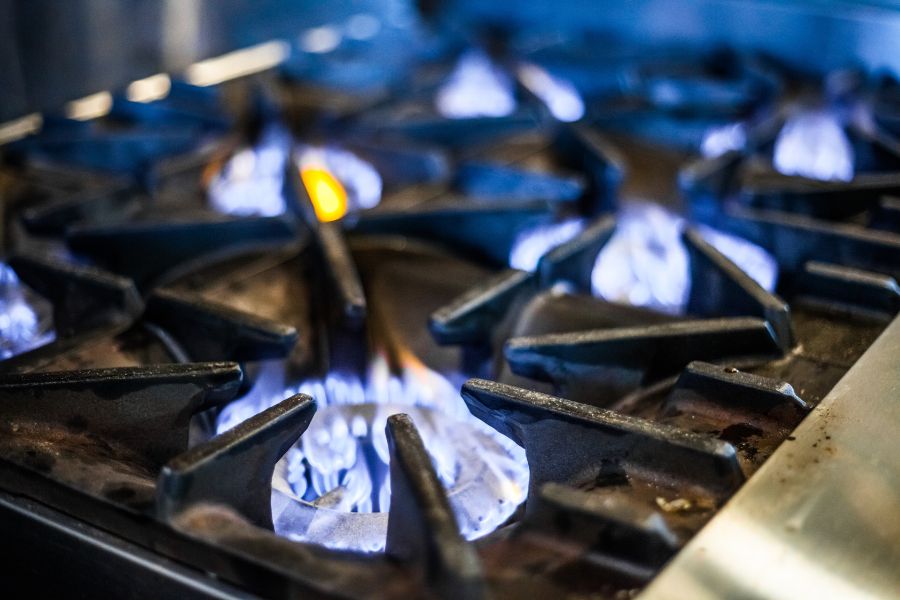
What Commercial Range Features Do You Need?
Modern commercial ranges come with a variety of features designed to enhance cooking efficiency and safety. Look for models with sufficient burners, griddles, or even double ovens to suit your cooking style. Safety features, like automatic shut-off and flame failure devices, are essential for preventing accidents.
What Maintenance Is Required From Your New Commercial Range?
Opt for high-quality materials that can withstand the rigours of daily use. Selecting a commercial range that simplifies cleaning and maintenance can significantly impact your kitchen’s efficiency and hygiene standards. The ease with which a range can be cleaned at the end of a busy day or between meal services is crucial. Here are some factors to consider:
- Surface Material: Stainless steel surfaces are popular for their durability and ease of cleaning. However, some ranges come with specialized coatings that can reduce food sticking and expedite the cleaning process. Evaluate the material of the range top and its resistance to corrosion and staining.
- Removable Components: Look for ranges with components that can be easily removed without tools. Burner grates, drip trays, and other removable parts should be dishwasher-safe to allow for quick and thorough cleaning. The simpler it is to disassemble, the more efficiently your staff can clean the range.
- Sealed vs. Open Burners: Sealed burners can prevent food and spills from entering the burner itself, making cleanup easier and protecting the burner components. Open burners, while offering superior heat distribution, may require more detailed cleaning to remove food particles and grease.
- Crumb Trays and Catchers: Ranges equipped with crumb trays and grease catchers can save significant cleaning time. These features collect food debris and spills during cooking, which can be easily removed and cleaned separately.
- Maintenance Accessibility: Beyond daily cleaning, consider how easily a technician can access internal components for maintenance or repairs. Commercial ranges designed with serviceability in mind can reduce downtime and maintenance costs over the range’s lifespan.
Incorporating these considerations into your selection process will help ensure that your commercial range remains in optimal condition, supporting both food safety and kitchen efficiency.
Making the Decision
After evaluating the key factors, balance your findings with your budget. Remember, investing in a higher-quality range can save money in the long run through increased efficiency, reliability, and durability.
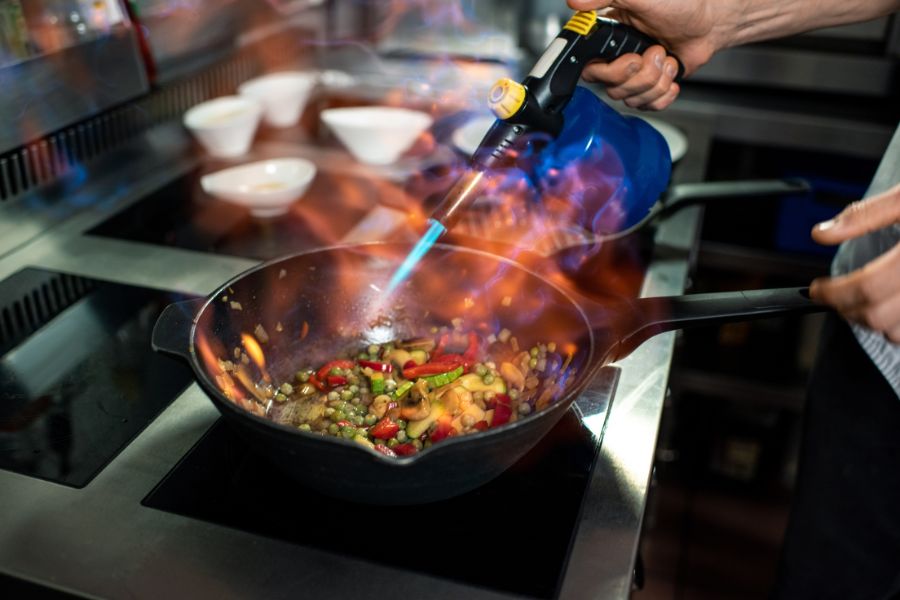
Consult with Professionals
Seek advice from industry professionals who understand the nuances of commercial kitchen equipment. Their expertise can guide you toward the best choice for your specific needs.
Your Takeaway
Choosing the right commercial range is a significant decision that affects every aspect of your kitchen’s operation. By carefully considering your needs, evaluating the available options, and consulting with professionals, you can select a range that enhances your kitchen’s efficiency and the quality of your dishes. Canada Food Equipment is here to support you in this crucial choice, offering a range of top-tier commercial kitchen equipment that meets the diverse needs of Canadian restaurants.
For personalized assistance in selecting the perfect commercial range for your restaurant, contact Canada Food Equipment at (416) 253-5100. Our team is ready to help you navigate our extensive selection, ensuring you find the ideal solution for your kitchen.

